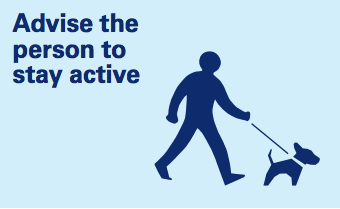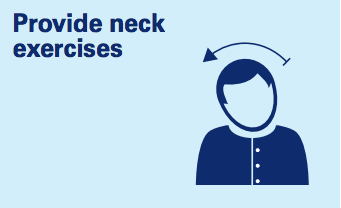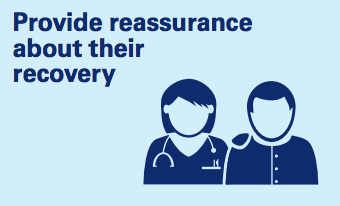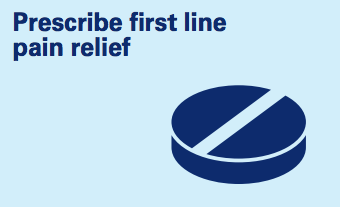Whiplash: A summary for health professionals
This information is for GPs and health professionals and applies to adults (18+ years) with acute or subacute simple neck pain after a motor vehicle crash and covers the first 12 weeks after injury.
More information can be found in the quick reference guide or the guidelines for the management of acute whiplash-associated disorder for health professionals 2014.
Whiplash injuries can be managed like other similar soft tissue injuries.
The following evidence based recommendations should be considered in your approach to ensure the best health outcomes for adults with a whiplash injury.
1. At the examination
Conduct a thorough assessment and physical examination to help direct treatment.
Use the Canadian C-Spine Rule to determine whether an X-ray is required to confirm the diagnosis of a fracture or dislocation.
Classify the grade of whiplash to indicate the severity of the injury (WAD Grades I–IV).
Note that referrals for radiological imaging and special tests, such as MRI, CT, EEG, EMG or specialised peripheral neurological tests, are not recommended for WAD I and WAD II.
2. Identify patients at risk at the initial assessment
Screening patients is the best way to identify patients at risk of poor recovery and to target treatment.
| What to assess | How to measure | What indicates risk of poor recovery |
|---|---|---|
| Neck disability | Neck Disability Index (NDI) | Score greater than 15/50 |
| Pain intensity | Visual Analogue Scale (VAS) | Score greater than 5/10 |
| Expectations of recovery | Do you think you are going to get better soon? | Poor/negative expectation of recovery |
For those patients at risk of poor recovery, provide recommended treatments.
3. Provide recommended treatments
- Encourage patients to stay active.
- Reassure patients that they will recover. Acknowledge symptoms and encourage patients to continue with normal daily activities as much as possible.
- Inform and educate patients and emphasise the importance of staying positive to optimise their recovery.
- Advise patients that whiplash neck exercises are effective.
- Discuss pain relieving medications and provide strategies for pain relief. Paracetamol is the recommended first option, followed by NSAIDs. Where the use of oral opioids is necessary, short-acting agents at regular intervals is preferable. Review ongoing use regularly.
The whiplash fact sheet summarises these recommendations and provides patient information.
What about other treatments?
There is limited evidence for the following treatments:
- manual therapy
- thoracic manipulation
- acupuncture
- trigger point needling and
- Kinesio taping.
Closely monitor these treatments and only continue if there is evidence of benefit. Benefit is a 10% improvement in their pain score (VAS) and their neck disability score (NDI).
4. Review and take recommended action
Advise patients to come back for follow-up at the following regular intervals to review recovery: 7 days, 3 weeks, 6 weeks and 12 weeks. At the follow-up:
- review both physical status and progress with recommended treatments
- monitor their pain (VAS) and neck disability (NDI)
- where indicated, review psychological status and screen for posttraumatic stress at 3 and 6 weeks. A score of 25 or more should lead to considering a referral to a psychologist experienced in posttraumatic stress symptom management.
Importantly, take action if your patient is at risk of poor recovery.
The whiplash-associated disorders flowchart provides a structure for the assessment and treatment of patients with whiplash in the first 12 weeks after injury.
5. Apply for benefits
Visit our making a claim section for more information about the Compulsory Third Party insurance scheme.
Recommended whiplash treatments




